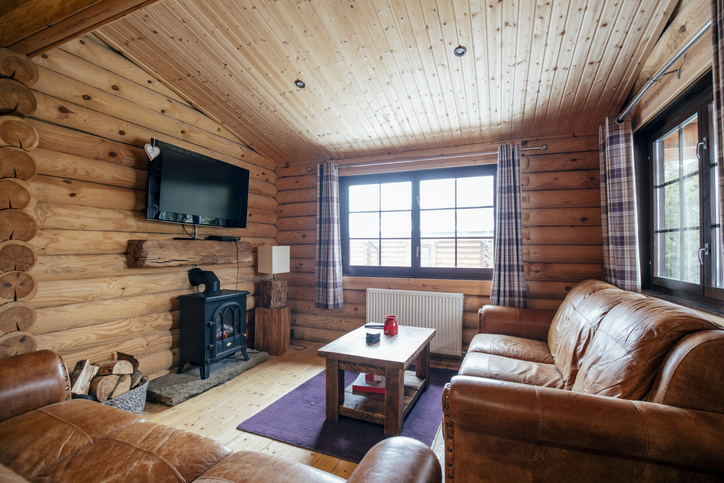
Photograph of a living room in a log cabin.
There’s probably no abode with a more comforting atmosphere than a log home. But while these structures offer a relaxing respite away from the city, it is a challenge to keep them well-insulated. Wooden material reacts differently to the weather compared to the usual brick and concrete. Thus, different considerations come into play when controlling temperature.
Here are some things you need to know about insulating your log home so you’ll feel comfortable inside, no matter how intense temperatures are outside.
Understand R-values
First, you should get acquainted with R-values. These are units of measurement for a material’s ability to resist heat flow. A higher R-value suggests better insulation so let’s say your home is in a colder area, you’ll need a higher R-value.
The thing about logs used in construction is that R-value-wise, these may not come up to standard. An article by the US Department of Energy notes that a wall 6 inches in width made out of softwood logs will only have an R-value of 8. A thinner (3 ½ inches) wood stud wall with added insulation features will give a better R-value of 14. Then again, other factors will still come into play to make the log home a strong contender in the insulation aspect.
The climate factor
The magic of logs lies in their ability to store heat during warmer times of the day, then release this as the climate cools down. It doesn’t matter what the heat source is, be it the sun, the stove or the fireplace. This heat will be absorbed by the logs to be gradually released in your home in the evenings when you need it most. Moreover, the thicker your logs are, the higher the R-value will be.
Still, the occurrence of drafts could happen and negatively affect your natural insulation indoors. For this, the next segments could help.
Roof and floor
A log home is not made entirely out of whole logs – like the roof, for example. Physics dictates that heat always rises, and so will your chances of totally insulating your home from the colder climate outside. Integrating insulation material with the wood just below the roof will help stop the heat from coming out through it.
The ground on which your log cabin stands can also absorb heat and cool your home. So putting insulation underneath your flooring is a great idea to retain the heat inside your log home before it gets absorbed by the ground.
Fill in gaps
It’s not a surprise to find gaps in between logs in your log home, as well as on openings like windows and doors. This could occur because of the wood contracting during summer and expanding during winter. It’s nice to let some air in but a freezing draft is not something you’ll want inside.
Before actual construction, logs to be used should be properly dried. If not, the moisture will cause these to contract and create yawning gaps between them. Choose waterproof and insecticide-treated logs to avoid this. You could also install large overhangs to prevent too much rain and direct sunlight from hitting the timber.
When the house is up and too much draft is still coming in, seal gaps with caulking or plastic gaskets.
The best sources of advice for log home construction in compliance with building energy codes would be your state’s local building planners and real estate agents with specialization in this type of abode. We at By The Bay Realty & Auction can be that real estate group for you and your concerns. Call us at 715.682.7337 or send us an email at jstricker54546(at)gmail(dotted)com. You can rely on us for your log home inquiries.
